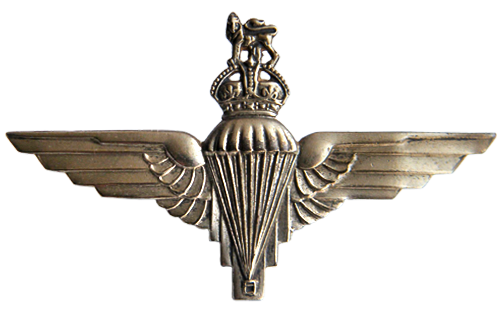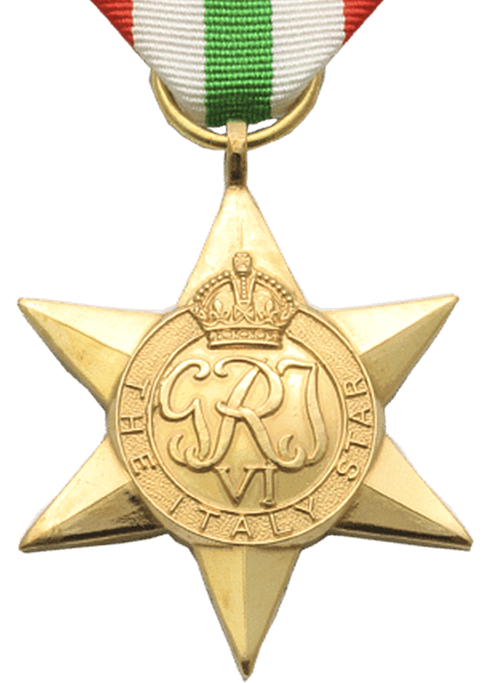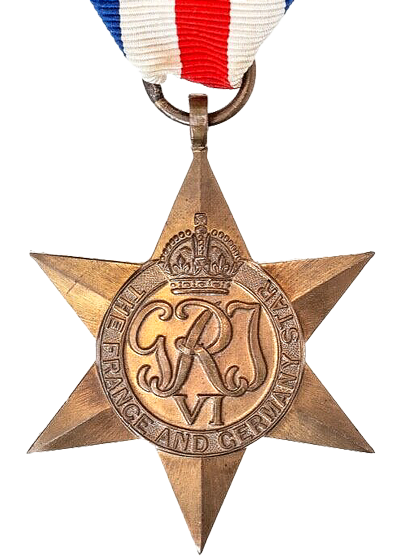I joined the parachute regiment 156th Batalion after service in Sicily and Italy 1943. In september 1944 I parachuted into Holland in a field called the Ginkelse Heide. Our pilot was an american chap who dropped of us in a corner of the field near to where German forces were located in the dense forrest, which of course we were not aware of. After 3 days and nights fighting the rest of the battalion tried to make it's way to Oosterbeek and I stayed behind, hiding in a hollow, to block the Germans from following the battalion. German mortars were firing at my friend John Jones and myslef. I took a piece of shrapnel in the ankle and was wounded and taken prisoner. In Apeldoorn, we were put into cattle pens then into railtrucks to Frankfurt, then onto 11b at Fallingbostell. I became a POW (Prisoner of War)
Born in a Leicestershire Village September 1924, left school at 14 years of age, no qualifications, started work on a poultry farm 10s, i.e. 50p a week. On the first Sunday in September 1939 coming home from church we heard war had been declared, (most people went to church in those days to keep the Squire happy). Father as a Sgt in the home guard, lad you better join us, to young for a uniform they gave me an arm band, and I was the messenger boy. An aerodrome was being built on the edge of the village, I went to work there driving a tractor (good wage) man from employment called I had to go back to work on a farm. I could not take that, volunteered for the RAF, told I was too young, went back at 17 plus, after medical found to be colour blind. Then called into the army, Leicestershire Reg. at Budbrooke Barracks. During training a Sgt of the Para’s came looking for volunteers, 3 mates and I volunteered when they told us it was 2 shillings a day extra when we had done 8 jumps, he did not say about the training before we say an aircraft, transported to Chesterfield station met by a NCO, put your kit on the transport yes we did then ourselves, get down, think lucky your kit is riding we are going to Hardwick Hall and you are marching, after 4 weeks intensive training we were fit to let the RAF take over parachute training.
Met at Manchester station with RAF bus room for kit and men taken to Ringway aerodrome (now Manchester airport), beds with sheets, food on plates, just like home. Two weeks training how to exit plane, (Whitleys hole in floor) then how to land, just like 2 weeks at the fairground, day came to get a parachute from the WRAF packers then on the bus to Tatton Park. The first two jumps were taken from a tethered balloon at 500 feet, on the way down a Sgt shouts orders, pick up chutes back to ringway day off repeat next day, after bad weather time from drops from the Whitley after 5 drops we need 1 night drop from the balloon that goes OK, next day the CO presents us with our wings and Maroon beret, that was a proud day. They gave us 2 weeks embarkation leave as we were ready to drop anywhere without notice. Home for Xmas 1943. Reported back to Hardwick, soon on the way as replacements to a unit just back from the invasion of Italy. Got off train at Oakham on a truck to Alexton Hall, just the job borrowed a bike home next day with the greeting where have you dropped from.
After a few weeks we were billeted in hunting lodges and stables in Melton Mowbray, training with the Battalion was intensive, forces marches over Yorkshire moors, absailing down wool mills in Homefrith, then river crossing the Trent in Notts. One morning volunteers were asked for a special drop, first time from a Dakota just the job walk out the door, just a minute we get to Cottesmore airfield there are RAF instructors from Ringway OK lads we have been trying this ourselves now your turn, strap this kit bag on your leg when about 100 ft to go play it out on a rope, by the way it has about 50 pounds of ammo or mortar bombs in it, take off after about one hour green light on then red out we go, landed at Nether Avon lined up, along came Churchill and Monty, well done boys first time that has been done, back in Melton given 7 days leave. First week in June things start to buss draw ammo confined to billets next thing on the 6th stand down invasion has started with the 6th airborne we remain at Melton.
After many stand bys for opps where we are not used, along came September, after 48 hrs leave, we are drawing ammo and parachutes again this time to drop in Holland (they don’t tell us Holland but give us Dutch money).
After briefing about the drop the Padre takes us to Melton Church then we know its going to be tough, early next morning transport takes us to Saltby airfield, there we sit while they patch up the aircraft that have been used for the 1st lift, this time America air base they give us a good breakfast, (lost over the North Sea!) landed on Ginkel Heath Sept 17th, 1944 that the start of the Battle of Arnhem. Enough has been written about this, I don’t wish to ad more, I was wounded and captured on the fourth day.
Picked up Waffen SS troops taken to SS officer sent to first aid post after he had relieved me of my cigs, wounded foot dressed then to railway shed locked in for 2 cattle trucks into Germany, after 4 days stop start with the RAF bombing the lines we arrived at Frankfort Stalag 11a, integrated by the Gestapo they know more about the regiment than I, confined under canvass for a month rained every day, then moved on to Stalag 11b at Fallingbostil, there we came under RSM Lord he demanded we came under Red Cross rules, rations very small as my foot was still weeping I was not sent out to work, they said (nix harbite nix essen) no work or food. Xmas came 1944 tried to cheer up A Red Cross parcel between 2 (usual 4). In March after a heavy bombing raid we were sent to sort out a railway station and sideing no tools just bare hands, I still had only one boot lost the other when wounded used a piece of wood bound on with a piece of blanket, the snow was deep temperature — 20s. The guards had us in open cattle pens with straw to cover us at night, food was scarce to be fair they didn’t have much for them self (I turned round and said nix essen nix harbite) guard took me to the officer he pulled out his revolver turned it round and pistol whipped me then said take him on a civvy train back to 11 b, the German women spat at me all the way back, (he knew they would). We were liberated by the same unit (30 corps) as should have got to us 8 months before at Arnhem. Arrived home after months with out a bath or change of clothes and only 1 shoe crawling with lice where we met at Wing aerodrome with sprays of lice powder.
I was in Germany during the winter and spring of 1944/45. A winter with little food and even less clothes. After the war was over I returned home when I got my strength back the posted me to Trest in Italy on the Yugoslav border against Tito.
Lew Kemp











